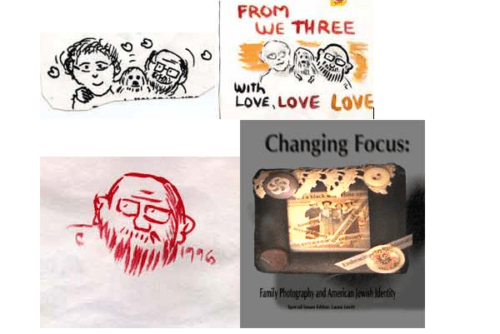In 2010, the United Nations Development Programme (UNDP), in partnership with the Asia Pacific Coalition on Male Sexual Health, released a 150-page report called the “Legal environments, human rights, and HIV responses among men who have sex with men and transgender people in Asia and the Pacific: An agenda for action.”1 While the data assembled pertain to 48 Asian Pacific countries and territories, subsequent reports and policy briefs have cast a sheen of sexual modernity on the dominant states of Northeast Asia—in this case, Hong Kong, China, Taiwan, Japan, and South Korea. Not only has male-to-male sex been legalized in all of these places, but trans citizens can also obtain legal documentation of their current gender and, in most of these countries, even marry an individual of a different legal gender. However, all of these Northeast Asian governments currently require trans citizens seeking legal recognition to successfully undergo gender “confirming” or “affirming” processes that entail a series of “convertive” or “corrective” genital surgeries, culminating in the total removal of male or female reproductive organs. Although access to the medical technologies of gender confirmation is a key component of the liberal discourse of trans equality, the biomedicalization of the trans body in the Northeast Asian region shows that sex reassignment surgery (SRS), as this process is most commonly called in the texts I draw on here, has increasingly become the neoliberal state’s primary technique for turning trans bodies into citizen bodies.2
In 1979, Janice Raymond’s The Transsexual Empire: The Making of the She-Male characterized SRS as a patriarchal tool developed to help men become women and thereby to infiltrate the second-wave feminist movement. Raymond’s most incendiary remark—that all trans people are guilty of raping women’s bodies—extended her transphobic outlook to include trans men who would deny and thus violate their own female bodily attributes through chest binding, the use of hormones, or other forms of body modification. The gender essentialism that Raymond promotes in The Transsexual Empire provides the ground for one of the primary critiques of second-wave feminism: its tendency to exclude people deemed marginal to the project of white women’s liberation. However objectionable and offensive her rhetoric, Raymond’s alignment of SRS on the side of empire in the years before the inception of the US transgender rights movement was also prescient in its description of biopower’s contemporary techniques—i.e., the infiltration of the biological and the social body—and in its perhaps unintentional association of body modification technologies with colonial medicine and the structure of biopolitical racism.
This multimedia essay presents a particularly gnarled instance of (the “transsexual”) empire’s afterlife: the forced sterilization of the trans body in Northeast Asia as a technique of biomedical neoliberalism and as an ambivalent outcome of postcolonial (sexual) modernity. Offering a preliminary map of the cultural politics of this biomedicalization, my trajectory takes us from the topic of trans activism in Taiwan to that of media celebrity in South Korea, and from the production of gender and sexuality theory in China and Hong Kong to an emerging site, I argue, of Asian Pacific Islander American identity formation in the figure of Thomas Beatie, the “pregnant man,” who is currently waging a legal battle in Arizona for custody of his three biological children. I begin, however, with a consideration of what it might mean to ground the emerging concept of “trans postcoloniality”—which regards people of color and the global South as central rather than peripheral to the development of trans critical frameworks—in a critique of the very mode of self-becoming that has become consonant with trans identity and trans visibility.3
Trans Postcoloniality
In 1991, Sandy Stone issued a strident rejoinder to Raymond’s The Transsexual Empire in “The Empire Strikes Back: A Posttranssexual Manifesto,” an essay that has been recognized as a founding document of Tran Studies. In the course of her attack on the medico-juridical regimes that regulate access to trans embodiment, Stone remarks on “aspects of colonial discourse with which we may be familiar: The initial fascination with the exotic, extending to professional investigators; denial of subjectivity and lack of access to the dominant discourse; followed by a species of rehabilitiation.”4 Her reflections on pioneering trans women like Jan Morris and Christine Jorgensen, however, reveal a further ambivalence about how medical histories of SRS seem to retain the anthropological interest and the orientalist imaginaries associated with the mutually-imbricated projects of medical tourism and sexual tourism to Asia. Stone quotes a passage from Morris’s 1974 autobiography, Conundrum, that describes a SRS clinic in Casablanca, Morocco as a perfumed, velvet-curtained harem in which Morris is attended by nurses wearing tassled robes as she is serenaded by a flute player from the street outside. Stone then observes, “Exit James Morris, enter Jan Morris, through the intervention of late twentieth-century medical practices in this wonderfully ‘oriental,’ almost religious narrative of transformation.”5 Though not without irony, Stone’s orientalist comment surfaces alongside her commentary on colonialist medical practices in a manner which suggests that—whether as a context for her narrative or as a referent for her politics—racialized bodies are crucial to the intelligibility of the (white) trans (feminine) body.
The relationship between Stone’s posttranssexual politics (centering on the political act of “coming out” as trans) and the notion of postcoloniality is further complicated by an understanding of how globalization has largely decimated the local economies and social structures that likely supported indigenous forms of sexual and gender variance which we now recognize as trans. For instance, a more recent UNDP report, from 2012, entitled, “Lost in Translation: Transgender People, Rights, and HIV Vulnerability in the Asia-Pacific Region,” observes that people belonging to gendered minorities and “third sex” categories are routinely driven into sex work and other criminalized labor practices by employment discrimination in ways that generate ongoing epidemiological concerns for the global health community. In an interesting shift of methodological perspective, however, the report newly draws the concept of “gender affirming healthcare” into the scope of vulnerability to disease:
With the focus of research on HIV vulnerability firmly on sexual behavior, there has been much less research on the HIV risks linked to gender affirming healthcare. Several possibilities exist. First, many trans women employ injections of hormones and/or silicone as a means to modify their bodies. When contaminated syringes are shared, there is quite clearly a risk of HIV transmission […] Feminising hormones (including both oral and injectable) usually interfere with the ability to have a penile erection, while gonado-genital surgery removes the possibilities altogether. We can speculate that, as a consequence, an individual once capable of taking a penetrative role may now more likely take the (more risky) receptive role.6
Certainly, the risk of syringe-sharing would decrease with legitimated access to hormone replacement therapy or to cosmetic procedures like silicone or collagen injections. But in the case of gonado-genital surgery or feminizing SRS, the researcher “speculates” that the very act of achieving gender confirmation—i.e., performing the “receptive” gender “role” in heterogenital sex, which seems a foregone conclusion when penile erection is no longer possible—might present the more obvious risk. Or the more speculative risk—as in the logic of speculative capital accumulation—since the report is correlating the prevalence of SRS procedures in the Asia-Pacific region with increased HIV vulnerability and the potential for great research gains. The fact that the report does not explicitly mention the regional governance technique of forcible SRS in this section lends an ominous, double valence to the researcher’s “speculation” about gender affirming healthcare in Asia and the Pacific.
The UNDP’s rhetoric (or lack thereof) surrounding forcible SRS in the Northeast Asian region appears even more problematic when we consider that access to the medical aspects of gender confirmation is quite unevenly regulated in North America and Europe. For instance, SRS is not required to change the gender designation on most government-issued forms of identification in most of the 50 American states.7 Instead, the legal patchwork of protections that exists across the country introduces a radical contingency to trans lives—as Thomas Beatie’s situation illustrates—but the absence of a consistent or codified trans recognition law in the United States has also enabled a range of trans identities that can openly resist and reject elements of a medically aided transition (including psychiatric diagnosis, hormones, and surgery). This “no-ho” (hormones) or “non-op” (operation) counterculture is also present in the Northeast Asian region, where local activists have achieved a measure of success in protesting the terms of South Korea’s trans recognition law, which stipulates that in addition to undergoing total SRS, trans citizens must not have biological children of their own. In March 2013, numerous US-based LGBT news outlets began reporting that a group of five trans South Koreans had successfully challenged the forcible SRS provision of what is known as the “Supreme Court Administrative Guideline No. 716” in a Seoul court. This represented a major development in a campaign that has drawn international attention since 2007, but no mention has been made of this trans recognition law’s other major provision: the prohibition against biological parenthood.
It is clear that the grassroots critique emerging from Northeast Asia has directly informed the Yogyakarta Principles on the application of international human rights law in relation to sexual orientation and gender identity. The text of “Principle 3: The Right to Recognition Before the Law” reads:
No one shall be forced to undergo medical procedures, including sex reassignment surgery, sterilization or hormonal therapy, as a requirement for legal recognition of their gender identity. No status, such as marriage or parenthood, may be invoked as such to prevent the legal recognition of a person’s gender identity. No one shall be subjected to pressure to conceal, suppress or deny their sexual orientation or gender identity.8
Developed at an international advocates’ gathering in Indonesia in 2007, the Yogyakarta Principles have faced opposition from numerous UN member states, and there has been no sustained discussion of their content. Instead, the UNDP’s framing of its data from the Asian-Pacific region persists in linking a triumphant narrative of economic development, LGBT civil rights, and sexual progress to ongoing epidemiological concerns and, most importantly, to a submerged discourse of the forced sterilization of trans people. As the primary means of transforming the trans body into the citizen body, SRS in Northeast Asia functions as a technique of governmentality that connects dominant voices in the international civil sphere to ruling ideologies at the nation-state level; stabilizes the gender binary in ways which facilitate the social if not the sexual reproduction of modern Asian culture; and participates in maximizing the efficiency of the state as well as the market in its production of the trans body as a resource that can be cultivated for the social good.
Trans postcoloniality takes its place in this moment alongside two other modes of critique that shape the horizon of trans studies in the Global North. First, the critique of “transnormativity,” which references the earlier radicalism of Stone’s posttranssexual politics and also coordinates with existing critiques of homonormativity that address the assimiliationist tendencies (e.g., gay marriage, gays in the military) of a LGBT culture structured around the concept of neoliberal personhood. Second, an ongoing critique of the medicalization of trans identity can be folded into an emerging focus on “transbiology,” which Jeanne Vaccaro describes as an analytic that underscores the relevance of “reiterative biological processes” to “the labor of embodiment” and to notions of gender performativity in order to “counter ontologies of wrong embodiment, in which difference is flattened by psychiatric dictates and legalized binaries.”9 Whereas a feminist transbiology forges ahead to consider the ethics and the politics of bodies (or body parts) that are “made and born,” in Sarah Franklin’s words, through biotechnologies such as cloning, stem cell derivation, and assisted reproductive therapies, a critique of forcible SRS in the Global South connects us to the history of bodies selected to die by colonial practices of population control and eugenic sterilization.10 Attuned to the workings of biopolitical racism as well as to the materiality of the sites in which such structural violence takes place, trans postcoloniality therefore responds to Leslie Bow’s call for “a serious inquiry into the ways in which race makes a difference in transgender criticism beyond invocations of the American Indian berdache or the hiras [sic] in India as examples of race’s entry into transgender analysis.”11
Departing from a US-centric, queer-studies-based framework that centers on the “border wars” between trans, lesbian/gay/bisexual, and feminist identities, I trace here a set of transnational feminist connectivities that, in Inderpal Grewal’s words, represent the global flows of political subjects and political possibilities that can only be contingently “linked to historical genealogies of feminist critique.”12 The sections below reflect on the apparent cultural impact of the biomedicalization of the Asian trans body on: the academic and activist production of knowledge about trans gender performance; body aesthetics and the commodification of beauty, health, and the reproductive capacities associated with the concept of fertility; the relationship between biological parenthood, racialized parenthood, and notions of surrogacy; and the affective labor and the coercive practices of kinship that help to define the Asian trans body as at once a biopolitical and a necropolitical project. A transnational feminist critique of these representations of trans postcoloniality reveals the flexible techniques of governmentality as well as the flexible performances of complicity and subversion that take place at the sites of social and sexual reproduction that constitute the body and the family. I read these examples from my own position—as US-based, queer Asian academic working at the limits of trans studies in the Global North—in order to show how the discourse of trans rights and trans identity politics in fact arrives belatedly to chart biomedical neoliberalism’s restructuring of a host of relationships from citizenship to kinship in the Northeast Asian region, and in the conceptions of Asian America that depend on these very global flows.
- J. Godwin, Legal environments, human rights and HIV responses among men who have sex with men and transgender people in Asia and the Pacific: An agenda for action, (Bangkok: United Nations Development Programme, 2010). The report can be found here: http://asia-pacific.undp.org/practices/hivaids/Publications.html. [↩]
- Forcible SRS has also been instituted in Iran, which the BBC reports ranks second only to Thailand in reported cases of SRS annually. In contrast to the nation-states I discuss here, however, Iran has been denounced in LGBT human rights discourse and by mainstream news sources for forcible SRS in expressions of anti-Arab sentiment and condemnations of religious fundamentalism. See http://news.bbc.co.uk/2/hi/7259057.stm. [↩]
- In “Sinophone Production and Trans Postcoloniality: Sex Change from Major to Minor Transnational China,” English Language Notes 49.1 (2011): 113, Howard Chiang has described trans postcoloniality in the Chinese context as “the formation of a politics of postcoloniality defined around the historical terms” of a “coinciding” between “the temporalities and spatialities of postwar trans-nationalism” and “the condition of possibility for the emergence of modern trans-sexual subjects across the Pacific Rim.” I am describing trans postcoloniality as a set of cultural politics that, rather than investing in a rhetoric of triumphal self-invention or in a liberal discourse of self-possession, is instead aware of the modes of constitutive violence that found its own form of hybridity and is thus capable of responding to multiple and overlapping forms of structural oppression. [↩]
- Sandy Stone, “The Empire Strikes Back: A Postranssexual Manifesto,” Body Guards, eds. Julia Epstein and Kristina Straub, (New York: Routledge, 1991). Rpt. in The Transgender Studies Reader, eds. Susan Stryker and Stephen Whittle, (New York: Routledge, 2006). [↩]
- Stone 2006[1991]: 222. [↩]
- S. Winter, “Lost in Transition: Transgender People, Rights, and HIV Vulnerability in the Asia-Pacific Region,” (Bangkok: United Nations Development Programme, 2012): 32. [↩]
- Birth certificates, which are known as “root documents,” pose the biggest challenge in the US context. In 2006, for instance, when New York City-based activists protested the New York State Department of Health’s policy regarding the requirement of total SRS before a gender assigned at birth could be changed, they cited data reporting that only three percent of all transgender men opt to undergo “convertive genital surgery.” See http://archive.srlp.org/talking-points-support-proposed-nyc-transgender-birth-certificate-regulations-fall-06. [↩]
- International Commission of Jurists (ICJ), Yogyakarta Principles – Principles on the application of international human rights law in relation to sexual orientation and gender identity, (2007), available at: http://www.refworld.org/docid/48244e602.html. Accessed 27 Apr. 2013. The International Bill of Gender Rights, adopted in Texas in 1996, has similar provisions supporting biological parenthood and the right to be free from involuntary psychiatric treatment, but does not specify medical procedures. [↩]
- Jean Vaccarro, “Transbiological Bodies: Mine, yours, ours,” Women and Performance: A Journal of Feminist Theory, 20.3 (2010): 222. [↩]
- Sarah Franklin, “The Cyborg Embryo: Our Path to Transbiology.” Theory, Culture & Society 23.7-8 (2006): 171. [↩]
- Leslie Bow, Partly Colored: Asian Americans and Racial Anomaly in the Southern South, (New York: NYU Press, 2010): 211. [↩]
- Inderpal Grewal, Transnational America: Feminisms, Diasporas, Neoliberalisms, (Durham: Duke UP, 2005): 3. [↩]





